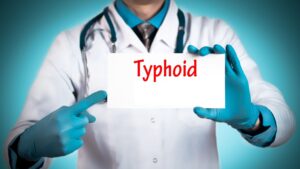
Typhoid fever is a serious infectious disease caused by the bacterium Salmonella typhi.
It is primarily spread through contaminated food and water and is common in regions with poor sanitation and hygiene practices.
Typhoid fever can lead to severe complications without proper treatment, so it is important to be aware of the symptoms, treatment options, and prevention methods associated with this illness.
Symptoms of Typhoid Fever:
The symptoms of typhoid fever usually develop gradually over the course of one to three weeks after exposure to the bacteria.
Common signs and symptoms of typhoid fever include:
1. High fever: A persistent high fever that can reach up to 104°F (40°C) is a hallmark symptom of typhoid fever.
2. Headaches and body aches: Patients with typhoid fever often experience headaches, body aches, and general malaise.
3. Weakness and fatigue: Persistent fatigue and weakness are common symptoms of typhoid fever as the body fights off the infection.
4. Abdominal pain and discomfort: Abdominal pain, cramps, and discomfort are frequently reported by individuals with typhoid fever.
5. Diarrhea or constipation: Some patients may experience diarrhea or constipation, along with nausea and vomiting.
6. Rash: A rose-colored skin rash may appear on the chest or abdomen of patients with typhoid fever.
7. Enlarged spleen: In severe cases, the spleen may become enlarged, which can lead to abdominal tenderness and discomfort.
It is essential to seek medical attention if you experience these symptoms, especially if you have recently traveled to a region where
typhoid fever is prevalent.
Diagnosis and Treatment of Typhoid Fever Diagnosing typhoid fever typically involves a combination of clinical evaluation, laboratory tests, and blood cultures.
Blood tests can help detect the presence of Salmonella typhi bacteria in the bloodstream, while stool samples may also be collected to confirm the diagnosis.
Treatment for typhoid fever usually involves antibiotics to target and eliminate the bacteria causing the infection. Commonly prescribed
antibiotics for typhoid fever include fluoroquinolones (such as ciprofloxacin) and cephalosporins (such as ceftriaxone).
It is crucial to complete the full course of antibiotics as prescribed by a healthcare provider to ensure the infection is fully eradicated.
In severe cases of typhoid fever, hospitalization may be necessary to provide supportive care, such as intravenous fluids and electrolytes to prevent dehydration.
Close monitoring of vital signs, blood counts, and organ function is essential to manage complications and facilitate recovery.
Prevention of Typhoid Fever:
Preventing typhoid fever involves taking proactive measures to reduce the risk of infection.
Here are some key strategies for preventing typhoid fever:
1. Vaccination: Getting vaccinated against typhoid fever is an effective way to protect yourself from the disease.
Two types of vaccines are available: an oral live vaccine and an injectable killed vaccine. Consult with a healthcare provider or travel
clinic to determine the most appropriate vaccine for your needs.
2. Safe food and water practices: Avoid consuming contaminated food and water by following safe food and water practices. It is
important to drink bottled or purified water, wash fruits and vegetables thoroughly, and avoid eating raw or undercooked foods, especially in areas with a high risk of typhoid fever.
3. Hand hygiene: Wash your hands frequently with soap and water, especially before eating, after using the restroom, and after handling food. Proper hand hygiene can help reduce the spread of bacteria and prevent infection.
4. Food safety: Practice proper food handling and preparation techniques to minimize the risk of contamination. Cook food thoroughly, store perishable items at the correct temperature, and avoid cross-contamination between raw and cooked foods.
5. Sanitation and hygiene: Maintain clean and hygienic living conditions to reduce the transmission of infectious diseases. Proper sanitation, including safe waste disposal and sewage management, is essential for preventing the spread of typhoid fever and other waterborne illnesses.
By following these preventive measures and staying informed about the symptoms, treatment, and prevention of typhoid fever, you can
help protect yourself and others from this serious bacterial infection.
If you suspect you may have typhoid fever or have been exposed to the bacteria, seek medical attention promptly to receive appropriate care and treatment.
Together, we can work towards reducing the burden of typhoid fever and promoting better health outcomes for all. Stay safe, stay informed, and prioritize your health and well-being.